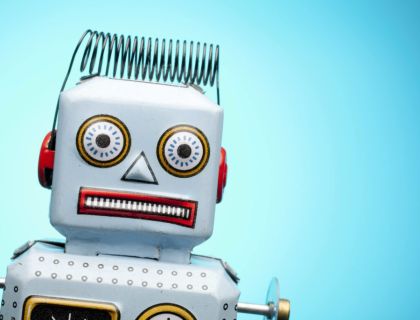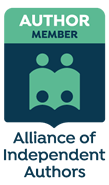ChatGPT on Joachim Frank’s life

.
One of my students tried to find out what ChatGPT had to say about my early life. Below is the answer, annotated by me. I found 10 major mistakes. For example, it freely invented names and professions of my parents, and placed the city of Munich into the USA.
“Joachim Frank was born on September 12, 1940, in Siegen, Germany. He grew up during a turbulent time in German history, as World War II was raging throughout Europe. Frank was raised in a middle-class family, and his parents were both teachers. His father, Richard Frank, was a physics and chemistry teacher, while his mother, Ursula Frank, was an art teacher.”
[1– neither of my parents was a teacher. 2– my father’s name is Wilhelm, not Richard, as ChatGPT could have found out from my vita published by the Nobel Foundation. 3– he was a judge. 4– no, my mother’s name was Charlotte, not Ursula, which is also in internet-accessible documents. 5– no she was not an arts teacher; she stayed at home with 4 children.]
“As a child, Frank was deeply affected by the destruction he witnessed during the war. He witnessed bombings, air raids, and the devastation caused by the conflict. Despite the difficult circumstances, Frank was a curious and intelligent child, and he became interested in science and mathematics at a young age.
Frank attended school in Siegen, and he was an excellent student. He excelled in math and science, and he was known for his intellectual curiosity and his enthusiasm for learning. In his free time, Frank enjoyed reading, hiking, and exploring the outdoors.”
[6– I didn’t excel in math, just in science. 7– what ChatGPT says about my free time is freely imagined except the reading part.]
“After completing high school, Frank enrolled at the University of Freiburg, where he studied physics. He was an outstanding student, and he quickly distinguished himself as a promising young scientist. Frank was particularly interested in the field of electron microscopy, which involves using a beam of electrons to visualize the structure of small molecules and materials.”
[7– regarding electron microscopy, totally untrue. 8– EM per se doesn’t involve visualization of “small molecules and materials.” It is a big field, and cryo-EM is just a subfield. 9– cryo-EM is used to visualize large biomolecules. 10– there is no such thing as “small materials”.
“Frank’s childhood experiences had a profound impact on his life and his career. He was deeply affected by the destruction and violence he witnessed during the war, and this motivated him to use his talents to make a positive contribution to the world. Frank’s interest in science and his passion for learning were also shaped by his childhood experiences, as he recognized the importance of knowledge and understanding in a world that was constantly changing and evolving.”
[Here is at least a glimpse of correct composition, but it might have been copied in toto from an authentic source]
“In conclusion, Joachim Frank’s childhood was marked by the turbulence of World War II, but he was able to rise above the difficulties he faced and develop into a gifted and passionate scientist. His experiences during the war inspired him to use his talents to make a positive contribution to the world, and his curiosity and enthusiasm for learning were shaped by the challenges he faced during his formative years.”
[ditto, also perhaps copied from somewhere]
Subsequently my student asked ChatGPT to fabulate about my life in science. Here I found 16 mostly major mistakes.
“Joachim Frank was born in Siegen, Germany, on September 12, 1940. He grew up in war-torn Germany and was deeply affected by the destruction he witnessed during his childhood. He became interested in science and mathematics at a young age, and after completing his undergraduate degree in physics at the University of Freiburg, he moved to the United States to pursue a Ph.D. in physics at the University of Munich.”
[1– the Ph.D. was in biophysics, not physics. 2– It was at the Technical University Munich, not the University Munich. 3– I did not move to the USA after my undergrad degree. 4– Both the University of Munich and the Technical University of Munich, as well as Munich itself, are located in Germany, not the USA.]
“After completing his Ph.D. in 1970, Frank moved to the United States, where he began working as a postdoctoral fellow at the Massachusetts Institute of Technology (MIT). During his time at MIT, he became interested in the field of electron microscopy, which involves using a beam of electrons to visualize the structure of small molecules and materials.”
[5– Here ChatGPT contradicts itself, since now it has me moving to the USA after my Ph.D. 6– I never worked at MIT. 7– I was interested in electron microscopy well before 1970 and well before I moved to the USA. 8– electron microscopy (EM) per se does not involve visualization the structure of “small molecules and materials”. It is used in hundreds of areas, and cryo-EM of molecules is just a small part. 9– it is incorrect that the molecules imaged by EM are small. On the contrary, the larger they are, the better. 10– there is no such thing as “small materials.”]
“In the early 1970s, Frank joined the faculty at the State University of New York at Albany, where he continued his work on electron microscopy. He developed a method known as single-particle reconstruction, which involves analyzing images of individual molecules to determine their three-dimensional structure. This method proved to be a major breakthrough in the field of structural biology, as it allowed scientists to visualize the structures of large biomolecules, such as proteins and viruses, in unprecedented detail.”
[11– I joined the faculty in 1986, not in the early 70s. In the mid-70s (still not early 70s) I joined the Division of Labs and Research of the NYS Health Department, but this important detail is left out. 12– now ChatGPG contradicts itself again, but this time gets it right: the biomolecules that can be visualized by cryo-EM are large.]
“In 1986, Frank joined the faculty at Columbia University, where he continued his work on electron microscopy and single-particle reconstruction. He also became interested in the field of cryo-electron microscopy, which involves freezing biological samples to preserve their structure and then using electron microscopy to visualize them. Frank developed mathematical algorithms to process the images obtained through cryo-electron microscopy, enabling the visualization of complex structures in unprecedented detail.”
[13– No, in 1986 I joined the faculty of the State University, not Columbia. 14– At that time I’m supposed to have developed an interest in cryo-EM. This date is wrong; it apparently comes from the known fact that it marks the publication of the first negatively stained sample, the 50S subunit of the E. coli ribosome. No cryo-EM at that point. 15– I started developing these algorithms in 1975, not 1986]
“In 2017, Frank was awarded the Nobel Prize in Chemistry, along with Jacques Dubochet and Richard Henderson, for his contributions to the development of cryo-electron microscopy. The technique has revolutionized the field of structural biology, enabling scientists to visualize the structures of complex biomolecules, such as viruses and proteins, in unprecedented detail.”
[this is apparently copied from an authentic source, and thus explains the surprising lack of mistakes]
“Throughout his career, Frank has made numerous contributions to the field of structural biology, and his work has had a profound impact on our understanding of the structure and function of biomolecules. He has received numerous awards and honors for his work, including the Ernst Ruska Prize in Electron Microscopy, the BBVA Foundation Frontiers of Knowledge Award in Biomedicine, and the Benjamin Franklin Medal in Life Science.”
[this is apparently copied from an authentic source, and thus explains the lack of mistakes, except 16– I never got the BBVA award]
“In addition to his scientific work, Frank has been an active advocate for science education and has worked to promote science literacy among the general public. He has also been a vocal advocate for science funding and has spoken out against efforts to cut funding for scientific research.”
[this is apparently copied from an authentic source, and thus explains the lack of mistakes]
“In conclusion, Joachim Frank is a pioneering scientist whose contributions to the field of structural biology have had a profound impact on our understanding of the structure and function of biomolecules. His work on electron microscopy and cryo-electron microscopy has revolutionized the field, enabling scientists to visualize complex structures in unprecedented detail. Frank’s dedication to science and education has inspired countless researchers and helped to promote science literacy among the general public.”
[this is apparently copied from an authentic source, and thus explains the lack of mistakes]
After seeing the mess this robot has made of well-documented facts I have less apprehension about the possible emergence of a spark of the “I” in AI.
.
This entry was posted in Blog and tagged AI, Chat GPT, cryo-EM, Germany, mistakes, Munich, robots, scientists. Bookmark the permalink.

❤️